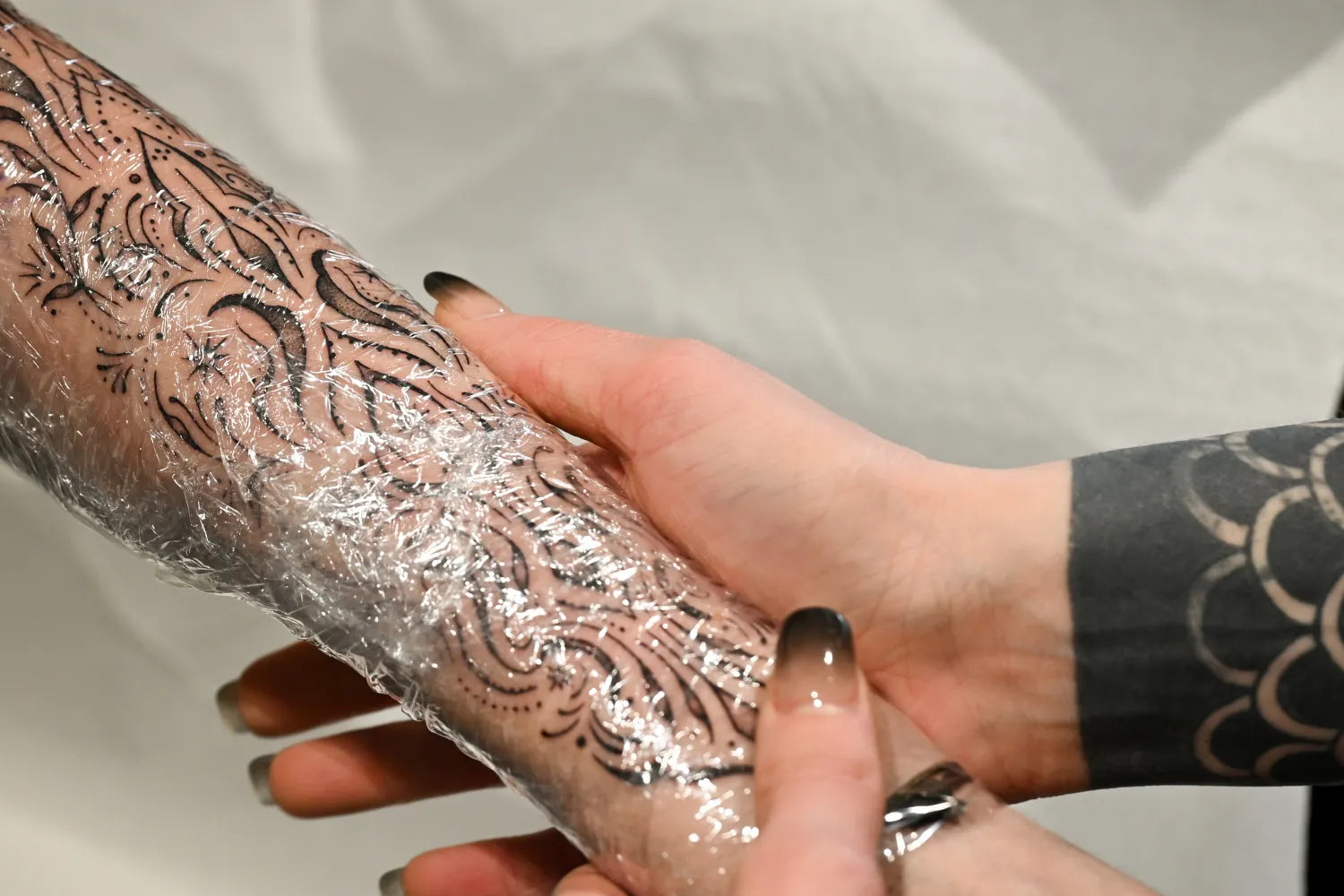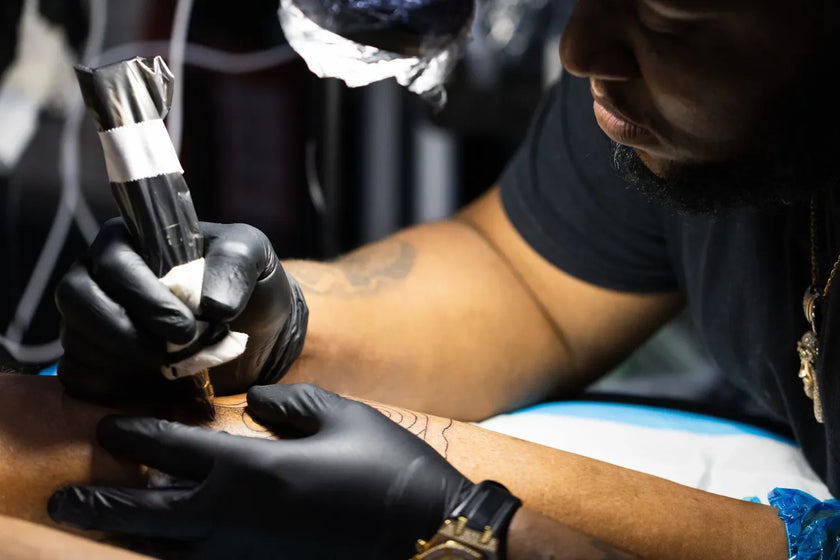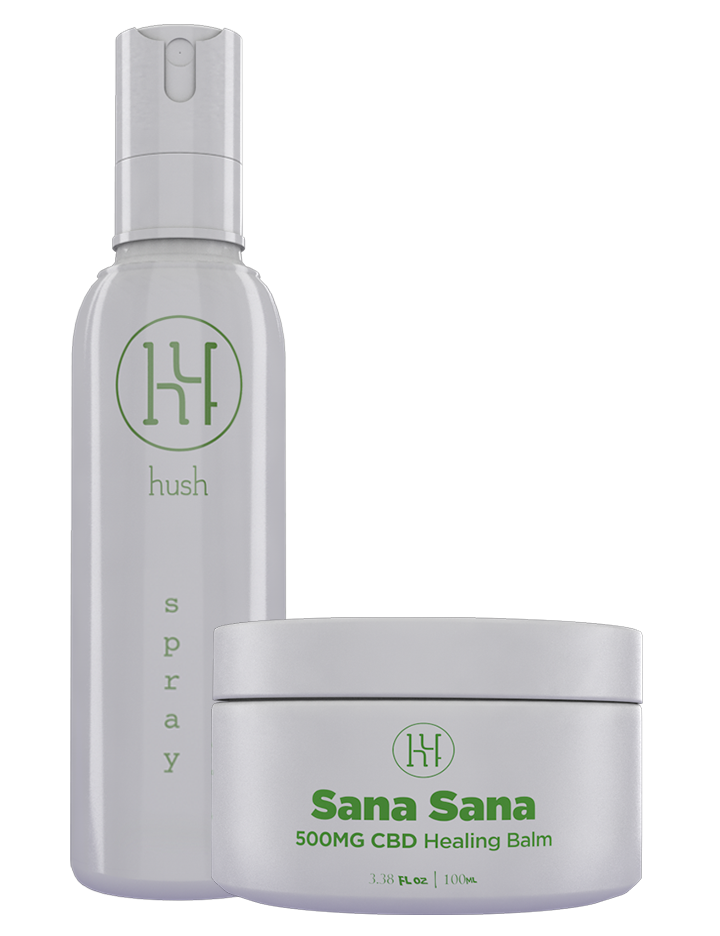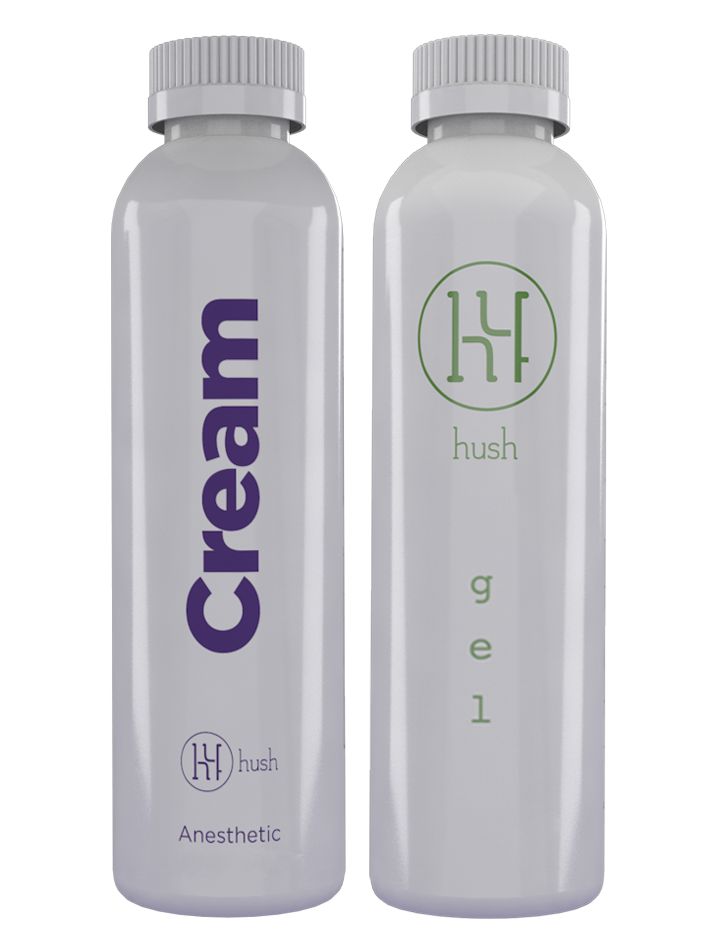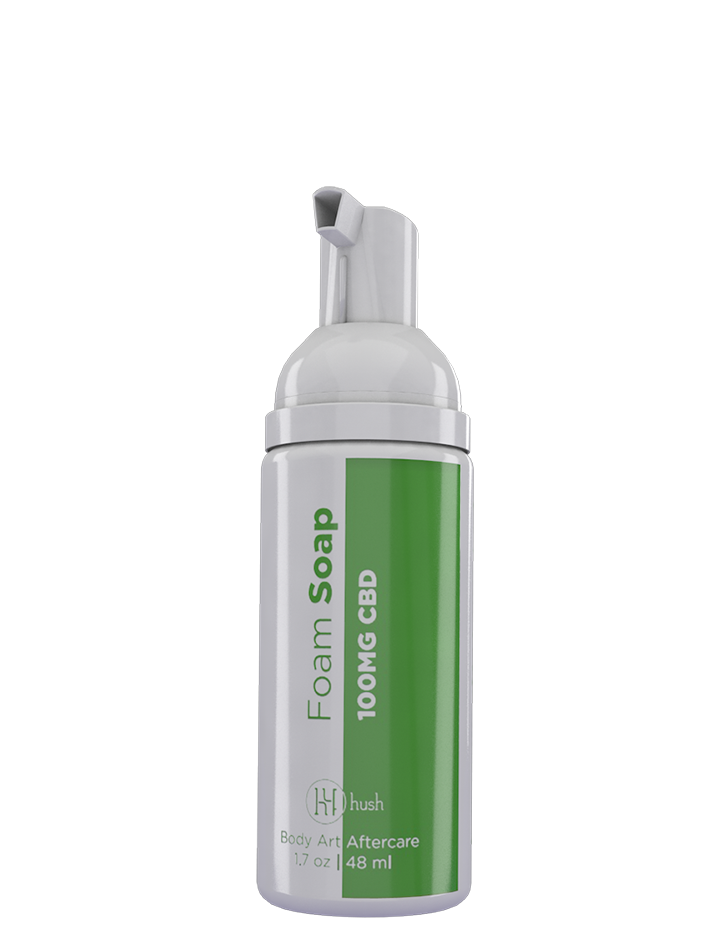Key Takeaways
- Healing Timeline: Surface healing = 2-3 weeks. Full healing = 4-6 weeks.
- Scabbing and Peeling: Totally normal, just don’t pick or scratch.
- Moisturizing : Use unscented, gentle products. Thin layers only.
- Showering Is Fine: But avoid baths, pools, and soaking.
- Sunscreen Is Forever: Start using it daily after your tattoo is fully healed.
- Redness and Itching: Normal, but if symptoms worsen, check with your artist.
- Working Out: Avoid friction, pressure, and sweat on the tattooed area for 5-7 days.
- Trust Your Artist: Follow their aftercare advice over internet strangers (yes, even us).
You finally did it. You got the tattoo. You spent a lot of time preparing, finding the right artist, and working up the nerve. Finally seeing the process through to the end and walking away with the tattoo that you want feels like the final step, but it's really the second to last step.
The moment you get up from the chair, the healing process begins. Your healing process can make or break your final result. Tattoo aftercare is the unsung hero of a beautiful, long-lasting tattoo. Mess this part up, and your fresh masterpiece could fade, scar, or get infected faster than it took you to wait for your appointment.
HUSH is here to give you a nuanced breakdown of what’s happening under the surface of your skin, what to expect, and exactly how to care for your ink in every stage.
What Happens to Your Skin When You Get a Tattoo?
When you get tattooed, a needle punctures your skin between 50 and 3,000 times per minute. The needle (or needles) are delivering ink past the epidermis (your skin’s outer layer) and deep into the dermis (the protected layer underneath).
The dermis is rich with blood vessels, nerves, and connective tissue. That’s why it hurts, bleeds, and swells. Your body doesn't understand that your tattoo is an intentional injury that's going to look really beautiful when it's done.
Your immune system thinks your tattoo is a threat. Each microscopic drop of ink becomes suspended in the dermis within cells called fibroblasts and macrophages. These cells hold onto the pigment because they believe they're protecting you. Your tattoo seems like an invader, and your immune cells hold onto the ink to keep it from traveling.
That's why tattoos stay visible permanently, even after the outer layer of skin renews itself. It’s your body’s immune response that locks in the design, but only if you don’t mess with the healing. You need your immune cells to safely hold the ink and keep it there forever.
What Happens During the Tattoo Healing Process?
In the first 24 to 72 hours, your body reacts like it’s been injured, because it has. It sends blood, plasma, and white blood cells to the area where you were tattooed. You may see light bleeding, oozing clear fluid, and feel some tenderness or swelling. It may seem gross, but it's very healthy and normal. It means that things are going according to plan.
Next, your skin begins rebuilding itself by pushing out damaged cells and starting the tissue regeneration process. This phase is where the flaking and scabbing happen. It's yucky, but trust the process.
The final stage, which can last several weeks, is your skin doing some internal restructuring. Even if your tattoo looks healed on the outside, there's a lot going on where you can't see.
What Are the Stages of Tattoo Healing?
Think of the tattoo healing process like seasons. Each phase has its own visual appearance, challenges, and requirements. Knowing what to expect can keep you from panicking when you reach the stage where your new tattoo is flaking like a croissant.
Expect a few temporary inconveniences on your way to a perfectly healed masterpiece.
Stage 1: Days 1-3
Redness, tenderness, and a bit of blood or clear fluid are totally normal. Your skin is in shock and reacting to the trauma. It may feel warm, tight, or mildly swollen. The leakiness is plasma helping form a scab. Your job during this time is to keep it clean. Wash gently with unscented soap and apply only a very thin layer of ointment if your artist recommends it.
Don’t suffocate it with plastic wrap unless using a healing wrap like Saniderm under instruction. Plasma can help your tattoo heal in the short term, but it eventually needs to dry out to finish the process.
Stage 2: Days 4-10
Here comes the itching. The flaking. You might feel like a shedding iguana and sympathize with how they must feel. The itch might drive you nuts, but do not scratch. Seriously. Scratching can remove scabs prematurely, pull out ink, and cause uneven healing or scarring.
Stage 3: Days 10-21
This is the phase where your tattoo might look a little off. The color may appear cloudy or faded. If you take good care of it, don't worry. The fogginess is caused by a layer of new skin covering it like frosted glass. You’ll be tempted to moisturize more or assume something went wrong.
Don’t panic. This is normal. Just stay the course. The new layer of skin will settle in, become clearer, and act as a perfect window for your tattoo.
Stage 4: Weeks 3-6
The flaking is gone. The color is coming back. Everything looks perfect, but it’s still healing beneath the surface. This is where most people slip up because they think the work is done. Don’t stop protecting it just because it looks healed. UV exposure during this stage can still fade or distort the tattoo.
Use sunscreen. Keep moisturizing. Be gentle. Be mindful of your body's needs. Staying hydrated and eating healthy can support the invisible part of the healing process.
10 Detailed Steps for the Best Tattoo Aftercare
Let’s break down the holy grail of aftercare. Each step below deserves your attention if you want that tattoo to stay bold, crisp, and clean. The HUSH tattoo aftercare kit is built around the S-Tier standard of tattoo care.
1. Follow Your Artist’s Instructions
Your artist didn’t spend years perfecting their craft without mastering aftercare. Listen to what they say, even if it differs from what your friend did or what you read on a blog. Artists often tailor aftercare instructions to their ink style, needlework, and experience.
If they tell you to leave the bandage on for eight hours, don’t take it off in 30 minutes. If they give you a specific ointment or wrap system, use it. They're setting you up for success, and you should take the easy ride.
2. Wash With Clean Hands and Gentle Soap
Tattooed skin is broken skin. It's really raw and tender, kind of like a freshly peeled sunburn. Wash your hands thoroughly before touching your tattoo. Then gently cleanse the area with lukewarm water and fragrance-free, antimicrobial soap. HUSH tattoo foam soap fits the bill.
Lather with your hands only. No washcloths, brushes, or exfoliants. The texture of cleaning or exfoliating tools can further damage your healing skin. Rinse well, pat dry with a clean paper towel, and let it breathe for a few minutes.
3. Moisturize (But Don't Smother It)
Use only a thin layer of ointment or HUSH tattoo balm for the first few days. You want a protective layer of moisture, but not enough moisture to leave behind an oily residue. Too much can clog pores and trap bacteria. Think of it like chapstick for your tattoo.
Look for natural ingredients that promote the healing process. HUSH tattoo balm is specifically formulated to deliver active botanicals and ingredients that support your body's natural processes, like CBD.
4. Let It Peel, Flake, and Heal Naturally
This is the itchy, flaky, kind of aggravating phase. Your skin is replacing old cells with new ones, like it does all the time. This happens all day every day, but you're more likely to notice it after you get a new tattoo when your dead cells are clustered closely together.
Expect weird textures, some dullness, and little flakes falling off like dandruff. Do not pick, rub, or scratch. This includes “accidentally” peeling or encouraging your tattoo to peel. That’s how people end up with faded patches, scars, or wonky outlines. Be patient. You’re almost there.
You can use HUSH tattoo numbing spray to dull the itchy sensation. It's a lot easier to resist the urge to peel or scratch when you can't feel the itchy sensation.
5. No Swimming or Soaking
Pools, lakes, hot tubs, and baths are full of bacteria. When you have an open wound, you're inviting the bacteria in. Even if the water looks clean or you're using your bathtub at home, you can't eliminate the risk. The bathwater can carry natural bacteria from other parts of your body right into your tattoo.
Opt for short, warm showers and avoid letting the water jet directly onto your tattoo. It's better to wash your tattoo outside of the shower when you have more control over how much soap and water will come into contact with it.
6. Stay Out of the Sun (Kinda Forever)
UV rays can be super dangerous, even when it isn't particularly bright out. When you have a new tattoo, you should avoid the sun entirely for a few weeks. You can't put sunscreen on a fresh tattoo, so you'll need to make sure it's covered by your clothing for the first six weeks.
After the six-week mark, you should be using SPF 30 sunscreen every time you go outside. It's a good idea to do that anyway and to put sunscreen on your whole body.
Sunscreen does more than protect your tattoos from fading. It can literally save your life. An extra three minutes to your daily routine to protect yourself from UV damage is a pretty good exchange.
7. Choose Your Wardrobe Wisely
During healing, friction leads to fading, scabbing, or even ink loss. You've gotta think carefully about what you wear. If you have a tattoo that goes into the bend of your arm, wearing sleeves that come into contact with that bend can rub out the ink in that sensitive spot. Bras can affect the way rib or shoulder tattoos heal.
It's not the worst thing in the world if you need to wear loose sweatpants and big t-shirts for a while. You won't be winning any best-dressed awards, but it's worth it to protect your tattoo.
Think of it this way: after surgery, the doctor tells you to wear loose clothing while your incisions are healing. Although a tattoo wound is a lot less significant than a surgical wound, the healing surface of your skin is going to react the same way. Wear your cozy healing clothes for a little while. It's worth the fashion compromise to keep your ink intact.
8. Take It Easy at the Gym
Working out can stretch, irritate, or infect your tattoo, especially if it’s in a high-friction area where it may come into contact with exercise equipment. Sweat also introduces bacteria and moisture that can slow down healing.
Avoid intense workouts for at least the first five days. After that, keep it clean, avoid friction, and skip anything that strains the tattooed area. If you're really eager to get moving, slowly walking around in an air-conditioned environment is pretty safe. Window shopping or taking a trip to the aquarium is a good way to get your steps in.
Even if you're super clean at the gym and have the most considerate hygiene practices, you can't guarantee that everyone else at your gym is as upstanding as you are. It's a good idea to avoid gyms (and bars, and clubs) because there's a lot of bacteria floating around.
9. Don’t Panic If It Looks Weird
Your tattoo will go through some awkward stages. Remember when you were growing up and you had that really weird stage, somewhere between late middle school and early high school? It's because you were maturing, and your tattoo is doing the same thing.
Your skin has to shed and heal the top layer. Your tattoo may look cloudy or foggy. Colors might appear dull for a minute. It's totally temporary. Your tattoo is just going through its awkward phase. Trust the process for a couple of weeks and everything will turn out okay.
If something seems really off, like pus, spreading redness, or pain that worsens after the third day, contact your artist and your doctor. Infections aren’t common, but they do happen. Excellent aftercare processes can dramatically reduce the chances that you'll get an infection. If something goes awry and you catch it early, it's unlikely to become a big deal
10. Play the Long Game and Protect Your Tattoo for Life
Once healed, your tattoo needs maintenance just like anything valuable. Keep it moisturized. Use sunscreen daily. Avoid repeated trauma (like rubbing or over-exfoliating).
Tattoos fade naturally over time, but how fast they fade is up to you. If you stay on top of it, it's possible that you'll never feel the need for a touch-up.
Your skin is the largest organ of your body. It needs care and protection. Anything you do to keep your skin healthy will also keep your tattoo healthy. Take care of yourself and your art.
FAQ
If this is going to be your first tattoo, you might have some questions about what to expect. Let's make it simple for you.
How long does a tattoo take to heal completely?
A tattoo goes through visible healing in about 2-3 weeks, but complete internal healing can take 4-6 weeks. Even when the top looks gorgeous, your body can still be doing some heavy lifting beneath the surface.
Is itching normal during healing?
Annoyingly, yes. Itching is a hallmark of healing skin. As your body regenerates cells and peels off old skin, nerve endings start firing again. As aggravating as it can be, it's a great sign.
The key is not to scratch. Slapping the area gently, using a cool compress, or moisturizing with an unscented lotion can help without disturbing the healing process. Scratching can lift scabs and compromise ink retention.
What does a healing tattoo look like day to day?
In the first few days, it’ll be red, shiny, swollen, and possibly oozing some plasma or ink. Days 4-7 will get a little flaky and your tattoo will peel like a sunburn. Little colored flakes may come off.
Days 8-14 usually involve fading, dryness, and a dull appearance as a fresh layer of skin covers the design. As things move on, things smooth out, and the tattoo begins to reemerge clearly. Just remember: if it looks bad, it's probably just in its awkward “middle school” phase.
Why does my tattoo look faded during healing? Did I do something wrong?
Not at all. This stage is called the “silver skin” phase, where a thin layer of newly formed epidermis covers the tattoo. It naturally dulls the design until it fully matures. Give it a couple of weeks for your color and clarity to return once the skin becomes fully transparent again.
Can I shower after getting a tattoo?
Showering is fine, but bathing is not. Showers are short, controlled bursts of water. Baths, pools, and hot tubs soak the tattoo and open you up to infection and fading. Keep showers lukewarm, don’t let the water blast directly onto your fresh ink, and avoid scrubbing. Gently pat dry with a clean paper towel when you’re done.
What should I do if my tattoo gets infected?
If you notice signs like intense redness, swelling, heat, pus, streaking, or a fever, it might be infected. Contact your artist first. They’ll usually know the difference between normal irritation and a developing problem.
If your artist recommends seeing a doctor, don’t hesitate. Infections are rare, but they can get serious quickly if ignored. If you catch them early, the damage to your tattoo may be minimal and easily repaired with a touch-up.
Can I still work out while my tattoo heals?
You can, but modify your workouts. Avoid friction and sweating a lot while your tattoo is new. If your tattoo is on a joint or bendy area like the elbow, wrist, or knee, take a break or limit your range of motion. Excessive movement can stretch or tear healing skin and distort the design. Light cardio, gentle yoga, or targeted exercises away from the tattooed area are fine.
What products should I avoid on a healing tattoo?
Avoid anything scented, exfoliating, or antibacterial unless approved by your artist. Steer clear of anything with fragrance, petroleum jelly, or antibacterial ingredients. Just use the HUSH tattoo aftercare set. It contains everything you need to help your tattoo heal.
When can I expose my tattoo to sunlight again?
Not until it’s 100% healed on the surface and below. Even then, use SPF 30 or higher every time your tattoo sees daylight. Sun is the top cause of tattoo fading, and skipping sunscreen for even one day at the beach can damage your investment. Think of sunscreen as your forever ink insurance.
Final Thoughts: Heal It Like You Mean It
Tattoo aftercare isn’t glamorous, but it’s extremely important. If you want your ink to stay bold and beautiful for years, this is the price of admission. Be gentle. Be clean. Be consistent. And maybe keep a spare bottle of SPF in your bag forever.
You earned that art. Let HUSH help it live its best life.
Sources:
How Wounds Heal | Johns Hopkins Medicine
What is a Scab? | Cleveland Clinic
Infections Acquired via Fresh Water: From Lakes to Hot Tubs | American Society for Microbiology
